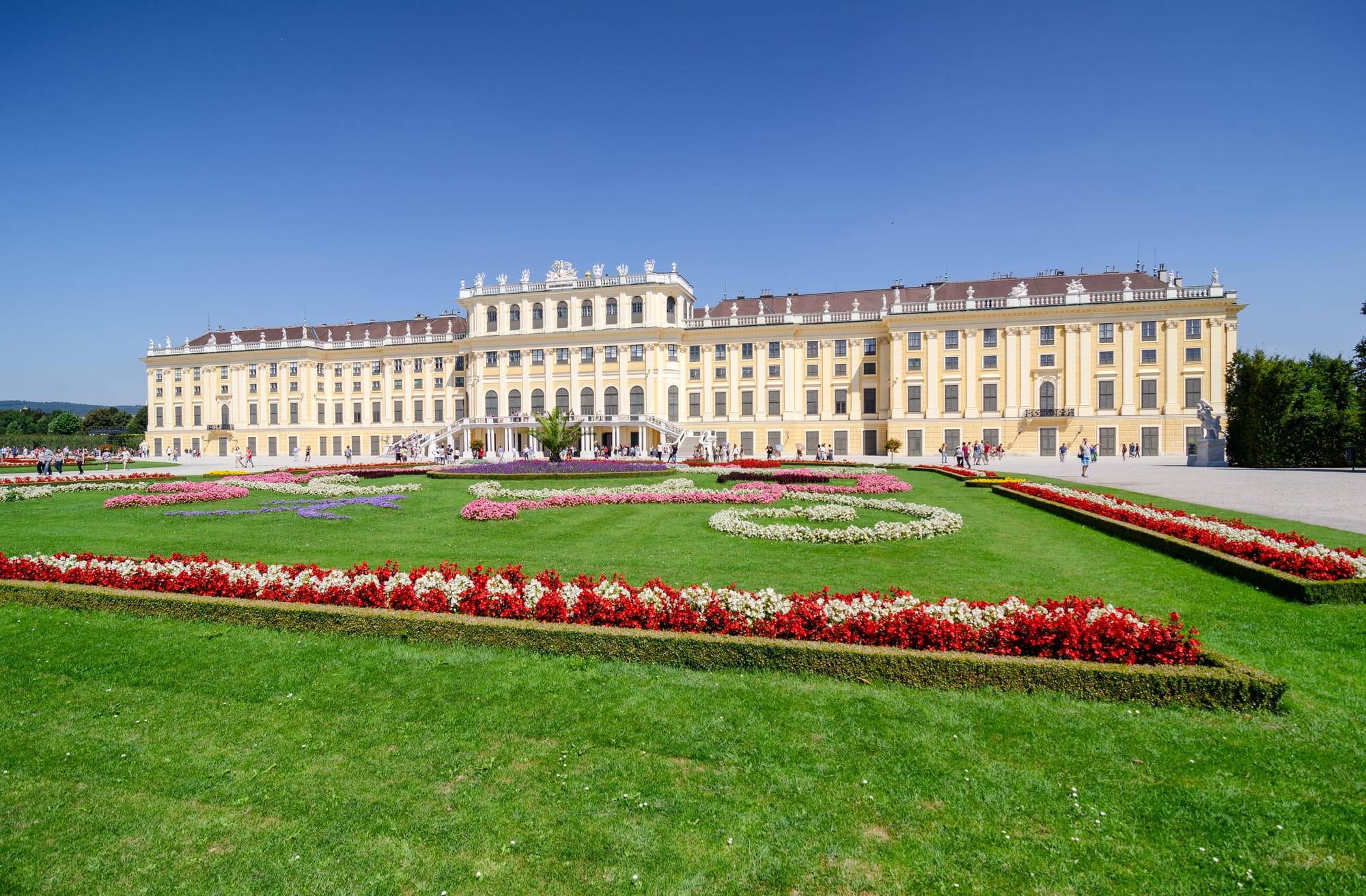A UNESCO World Heritage Site, Schönbrunn is an exceptional place not to be missed during your visit to Vienna. After being shaped according to the tastes of previous sovereigns, Maria Theresa of Austria breathed new life into this residence by granting it the status of an imperial palace. An ambitious restructuring project of the estate ►
A UNESCO World Heritage Site, Schönbrunn is an exceptional place not to be missed during your visit to Vienna. After being shaped according to the tastes of previous sovereigns, Maria Theresa of Austria breathed new life into this residence by granting it the status of an imperial palace. An ambitious restructuring project of the estate was undertaken to enlarge it and give it the profoundly rococo look that characterizes it today.
Nicknamed the "Austrian Versailles," this imposing and majestic castle overlooks magnificent flower beds in red and pink hues that unfold in sumptuous arabesques. Like a painting of profound beauty, vast gardens are arranged around the palace highlighting the grandeur and importance of the place. Indeed, they are endowed with many points of interest, such as a labyrinth extending over more than 1,700 m² or basins with Greek divinities finely carved in stone. In addition, the gardens contain an incredible particularity; they house a museum dedicated to imperial carriages. The latter is the guardian of relics that have rocked the court and the people for centuries.
Within the castle grounds are more than 1,440 rooms, where only 45 are open to visitors. Among them is the Grand Gallery which has a ceiling decorated with frescoes made by the Italian painter Gregorio Guglielmi. Indeed, by their splendid gray shades, they are distinguished from the white and golden walls surrounding them to create a result as harmonious as striking. Then, the royal apartments, witnesses of the famous owners who resided there, keep the imprint of their passage. The Rich Room still houses the ceremonial bed of Marie-Thérèse, composed of velvet and beautifully restored embroidery. The room of the imperial couple, formerly inhabited by Franz Joseph and his wife, Elisabeth, is decorated with neo-rococo-style furniture stored during the marriage of the future heirs to the throne. The Porcelain Room, tinted in blue and white, retains walls adorned with sumptuous woodwork, evoking with grace the characteristic motifs of porcelain. Many details are painted after works by François Boucher and Baptiste Pillement.
Thus, each castle room seems to transport us to completely different worlds, where the decorations and colors metamorphose as we progress in our visit. ◄
